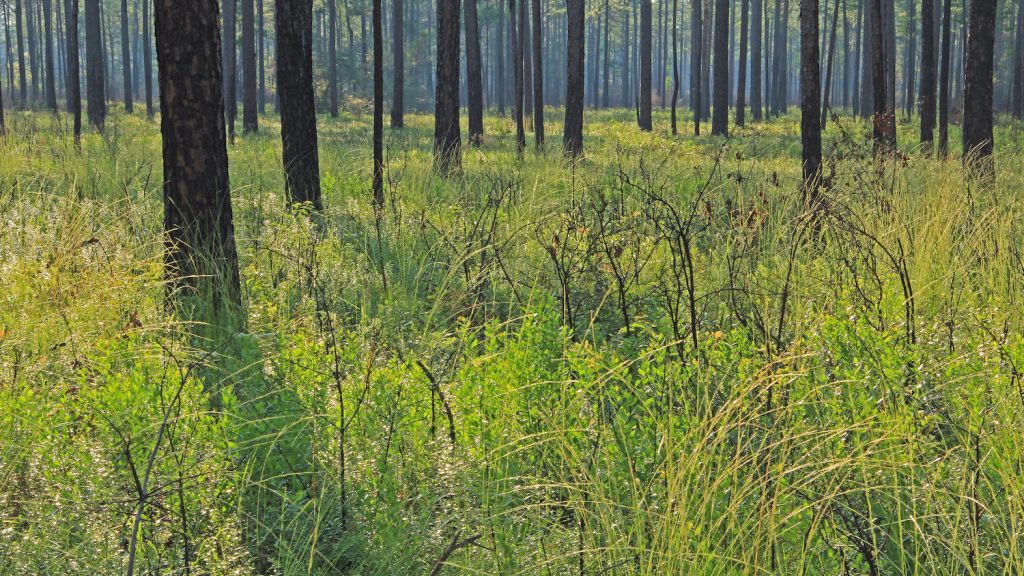Development of a SECAS Conservation Decision Guidance Library

Principal Investigator: Nils Peterson and Fred Cubbage, North Carolina State University
Project Completion: June 2015. This project has now been completed.
Implements Science Theme: 4 & 5
Overview
A priority of the Southeast Climate Science Center (SECSC) is to support the planning and implementation of a Southeast Conservation Adaptation Strategy (SECAS). This project examined the decision making context, decision making process, and management planning associated with the restoration of open pine ecosystems in the Southeast. To better understand the planning practice associated with this system, we assessed the quality of 35 management plans from federal, state, and nongovernmental agencies. We found that newer plans scored higher than older plans, suggesting agencies may be learning to develop better plans over time and indicating older plans should be prioritized for revision. Plans from federal and state agencies scored higher than plans from nongovernmental agencies, reflecting differences in agency missions and resources. The fact base scored high across most plans, whereas actions and implementation scored lower. Although agencies tended to perform best on fact base, our results suggest having a strong fact base has little influence on other components. To improve actions and implementation, planners should consider incorporating more stakeholder participation to help them develop better actions and implementation indirectly through improved problem and objective statements.
We also investigated how decisions were being made and what barriers – if any – faced decision makers. To gain this insight, we conducted 24 semi-structured interviews with key decision makers and stakeholders and our findings emphasized the challenge of collaboration between individuals, governmental and non-governmental organizations. We found discrepancies between groups on everything from objectives and goals, to how decisions are made, the barriers groups are facing, information that is used to make those decisions and where information comes from as well as differences in decision making timing and frequency. Agency managers had firm objectives while landowners/private land managers had flexible objectives that changed based on new goals, knowledge and information. In the same vein, agency managers said it was hard to change their management plans but landowners/private land managers said that their management plans were constantly changing to meet their shifting objectives. Agency managers reported that they had access to all of the information they needed to make “good” decisions while landowners/private managers said that they wanted and needed more information, specifically better economic and growth data. And although agency managers said climate change was a factor when making decisions, landowners/private land managers said that climate change was not a decision making factor. To bridge the gap between the two groups and increase information sharing, a library of regulatory requirements, scientific data, personal experiences and fiscal information may be a way to align management objectives and goals.
Lastly, we developed a questionnaire that may be used in future research projects to evaluate how socio-structural drivers and the personas of decision makers influence their decision making.
